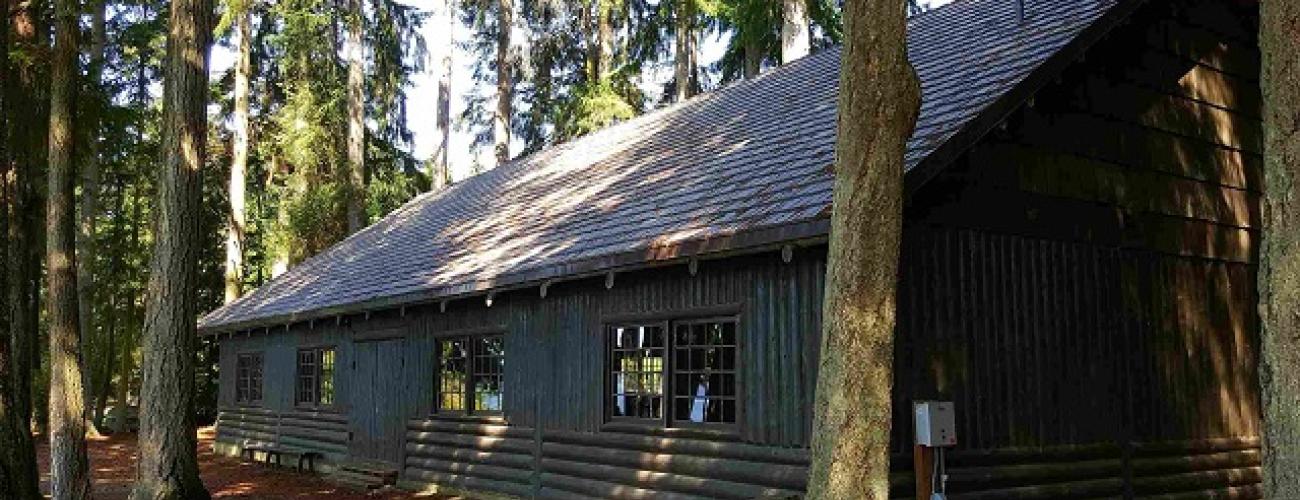Kitsap Memorial State Park History
Kitsap Memorial State Park is a testament to the value that local communities place on public parks and shoreline access.
Indigenous Lands
Kitsap Memorial State Park lies within the traditional territories of Coast Salish Indigenous people whose present-day descendants include members of the Skokomish Indian Tribe, Suquamish Tribe, Jamestown S’Klallam Tribe, Lower Elwha Klallam Tribe, and Port Gamble S’Klallam Tribe. For thousands of years this area has provided habitat for a diverse community of life that forms the basis of their cultures. According to anthropologist William Elmendorf, many Indigenous people from diverse tribal affiliations camped in the vicinity of today’s Kitsap Memorial State Park to harvest clams in August most years.
Local tribes ceded ownership of the area to the US federal government under duress in the Treaty of Point No Point in 1855, keeping rights to harvest natural resources in their usual and accustomed places including the waters of Hood Canal and the beaches of the Kitsap Peninsula.
Land Distribution
In 1850, the US Congress authorized the donation of surveyed public lands in the Oregon Territory (and Washington Territory, after it was separated from Oregon in 1853) to settlers after they had lived on the land for four years. A single male could be granted 320 acres; if the settler was married, his wife could also receive 320 acres in her name.
Government surveys were completed in 1860 and the land in today’s Kitsap Memorial State Park passed into private ownership as a Donation Land Claim to Findley (sometimes spelled Finley) and Jane Keller in 1866. Findley had arrived in Washington Territory from Maine in 1853 on the schooner L.P. Foster for which he served as Chief Mate. Jane arrived on a later voyage and the couple applied for the Donation Land Claim in 1854. The Kellers moved to the Seattle area in 1862, where Findley drowned in the Duwamish River after falling overboard from a ferry.
The Keller’s claim was subsequently divided and sold to others. The area just south of today’s Kitsap Memorial State Park developed into the community of Lofall, which obtained a post office by 1912.
Community Efforts Create Park
Members of the Vinland Community Club in Lofall embarked on a project to develop a community park during the difficult time of the Great Depression. In November 1935, the group reported that “Every year it grows increasingly harder to find waterfront property available for public picnic grounds. In a county where there is so much waterfront…. a tract of waterfront could easily be reserved for public park purposes.”
A committee headed by Henry Brown located a 45-acre property for the park and raised funds to make the $2,000 purchase, beginning with a commitment of $100 from the Kitsap County Commissioners. Despite the hard times, the project provided a positive rallying point for county residents and funds were raised with community dances, bake sales, raffles and other events.
A local bakery created a 40-pound fruitcake decorated to represent the finished park. The cake was displayed in the shop window and brought to service club and business meetings where raffle tickets were sold to raise money for the park. After the last tickets were sold, the cake was stored away for the drawing at the park dedication. In 1936, the land was deeded to Kitsap County for development.
Works Progress Administration
In the 1930’s as the Great Depression deepened, people throughout Washington and across the US struggled with poverty as job losses and business closures erased their economic security. Newly elected President Franklin D. Roosevelt moved fast to provide material relief for suffering families. The Civilian Conservation Corps (CCC) successfully provided employment opportunities for young single men.
The Works Progress Administration (WPA) was established to help unemployed men and women with families to support. The slogan “A hand up, not a hand out,” recognized that the program was providing a chance to work for a living and avoid the stigma of charity. Over the eight-year life of the agency, more than 8.5 million people worked on more than 1.4 million individual projects.
Kitsap County received $15,000 from the WPA for development of recreational facilities in the county, and on March 23, 1936, hired 25 people to begin construction at the Lofall Kitsap County Park site. J.A. Fleener of Lofall donated building materials and others contributed tools and machinery for cutting cedar shakes.
The WPA workers constructed four log buildings in the park: two kitchen shelters, a restroom and a large community building with a dance floor. The completed park was dedicated on August 15, 1937, in a ceremony attended by thousands of people.
Unfortunately, it was discovered shortly before the festivities that the 40-pound fruitcake had not survived the wait. A new cake was quickly prepared, “not quite so resplendent but fully as juicy a morsel,” in time for the event.
Becoming a State Park
Over time a lack of financial resources led to declining park maintenance. Volunteer efforts and county appropriations were insufficient for sustaining the park, and the park was deeded to the Washington State Parks and Recreation Commission on November 21, 1949. The park was named Kitsap Memorial State Park to honor a request from the Kitsap County Commissioners to recognize the strong sense of community spirit that led to the creation of this waterfront park for the enjoyment of visitors.
Sharing the histories of Washington’s state parks is an ongoing project. Learn more here.

